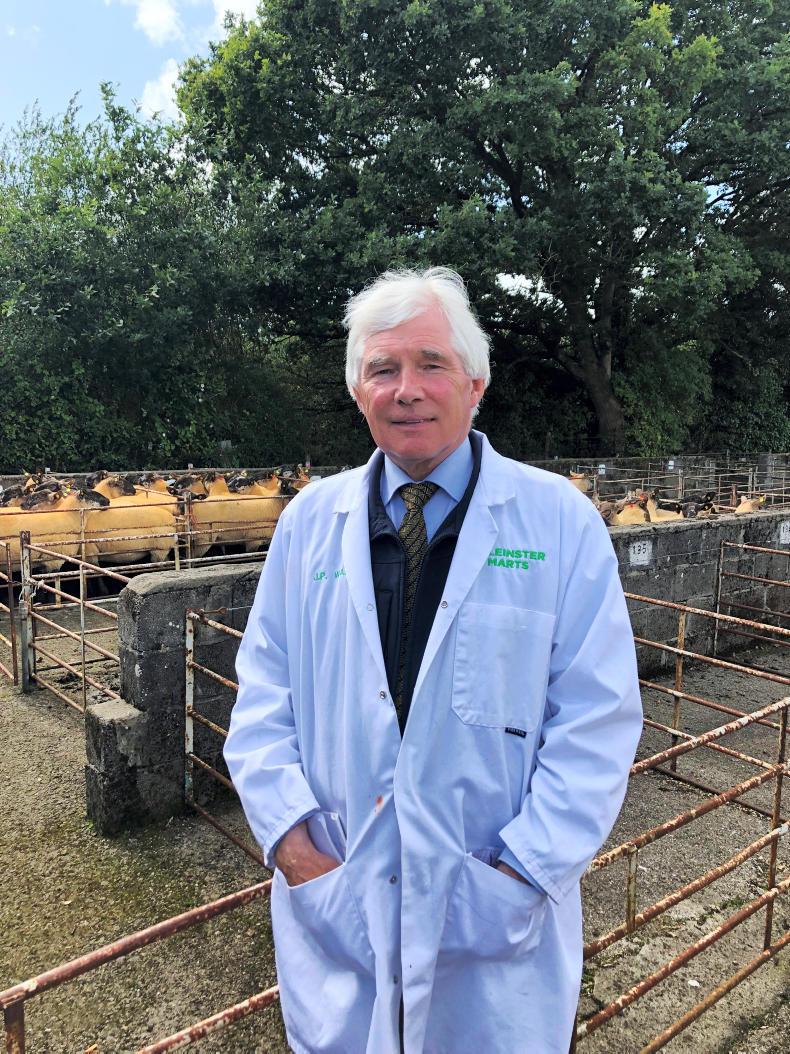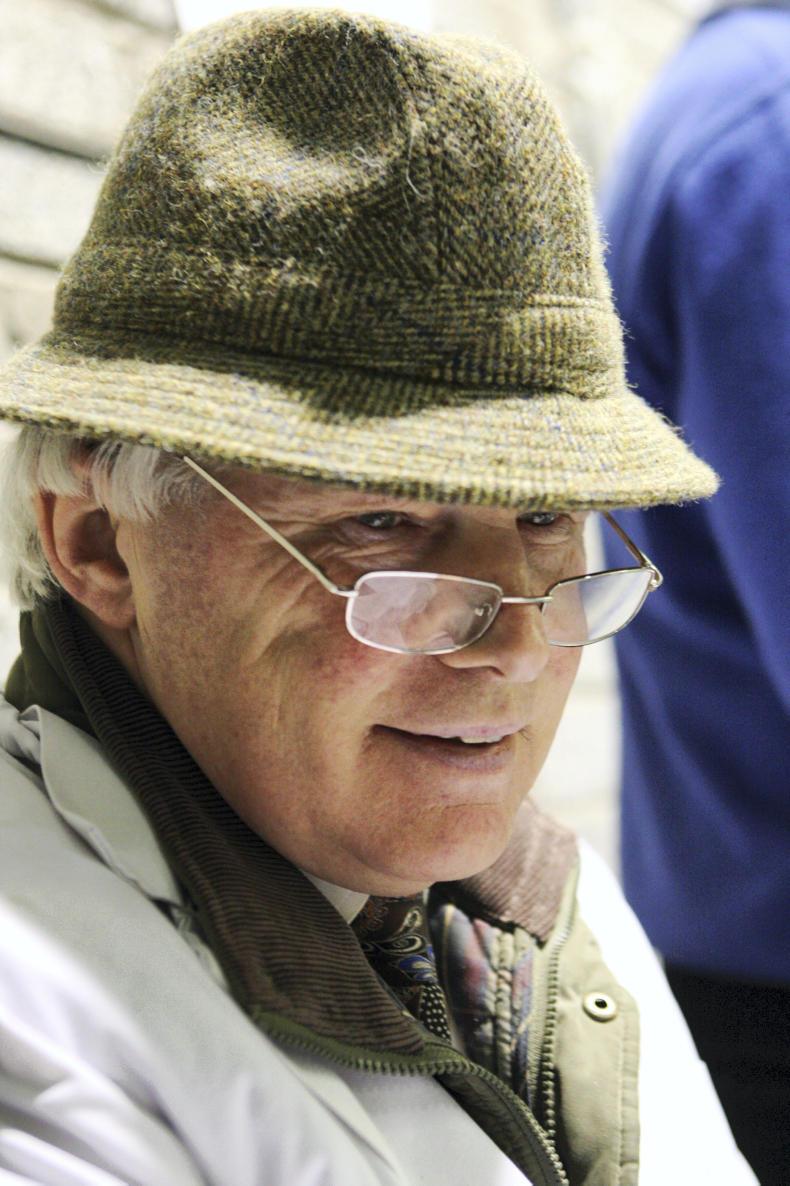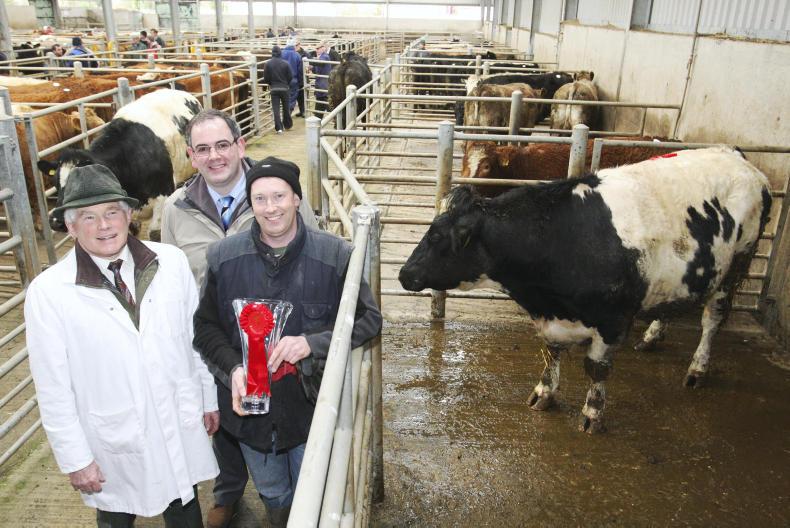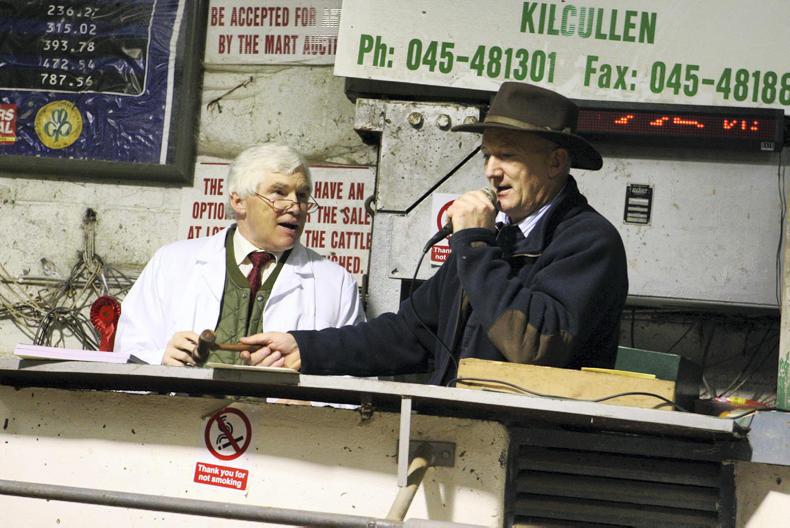I’m the mart manager for Leinster Co-Operative Marts. Like all the best things, I came into this job by accident. I studied commerce as a student a long time ago and a position arose with the mart in the 1970s. They wanted an accountant/office manager. I was not long out of college. I had worked at different things and had come from a farm. I went there for what I expected to be a short spell. When the six months were up, I thought that was as long as I’d be there, but they asked me to stay a bit longer. The manager at the time retired, a gap arose and there was an older man on the staff who was a cattle dealer. The board of management appointed him as general manager and they put me in next to him.

It was “back to basics” for Leinster Mart's Jimmy Walsh when the computers failed at the weanling sale at Kilcullen Mart.
I was quite young. As a young person interested in business, this wasn’t exactly the business I wanted. I had a hankering for something different. I was more interested in the motor industry at the time. When the time was up, I found the politics, the personalities and the business of the mart to be quite engaging, almost addictive. Forty-odd years later, I’m still there. The man in charge retired some years later, so that’s how it happened, by accident. Despite a good few ups and downs, I stayed with it.
Fairs
Before we had marts, we had fairs, usually on big wide streets of towns. Fairs weren’t just livestock fairs, you could have a fair for nearly any commodity. 
There was talk – and it did happen – about getting the fairs off the streets and into a fair green. The business people in the towns objected to it because then their customers would be taken away from them. In the end, the fairs moved to the fair green.
For the farmers that brought their cattle to the fairs, it honed a skill in them to be able to engage, meet, deal with, judge a person and their honour, take their money and meet them again the following year. That skill is mostly lost now. When the marts came, you trusted them to sell your cattle and it’s gone the full distance now and very often the seller might not be there at all. They might leave you a mobile number and say: “Give me a ring and tell me how you’re getting on.” That would be foreign to our early days, even in the mart. You would never sell a thing without the owner being there.
Another difference from the fairs to nowadays is the presence of women. Generally speaking they would have been men-only places, because if you thought highly of the woman in your life, you wouldn’t have her there. There was a lot of drunkenness and fighting. Today, our mart would often have a good attendance of young girls and women actively bidding but that would not have been the way then.
Co-operative mart
It’s probably more difficult to manage a co-operative business then it is to run a private company because in a co-op you have a number of masters to try and serve. Really, you are never your own boss, no matter how high up the ladder you are.
The idea of a co-operative mart in Carlow came from a branch of the National Farmers’ Association (NFA, now the IFA). When Carlow Co-Operative Mart started they took their lead from Kilkenny Co-Operative Mart and went along the same lines.
The co-op in Carlow registered in May 1958, they had no building and they had no mart at the time, but they had a society going. The society became owners of the fair green at the start of 1959. After a few years the mart in Carlow amalgamated with the mart in Kilcullen. In 1970, they formed Leinster Co-Operative Mart, and they bought the mart in Borris. Around that time they had five marts on the go, as they also had a mart in Bagenalstown, Co Carlow, and one in Athy, Co Kildare.
The mart reflected – and still does – reflect the changing trends in agriculture. The colours of animals changed, the feeding programmes changed and you could see that if you went to the mart.
In the 1970s we would have sold about 400 to 500 cattle every Monday in Carlow. A lot of them would have been brought from further south and sold up here. 1978 was our best year. We sold 72,000 cattle that year. The best we have achieved since then is half that. In 1979, 30-day TB testing was brought in and it took two-thirds of the cattle out of the mart system. That was the first kind of real rationalisation we had.

James Walsh, mart manager; Joe Kelly,Carlow IFA development officer and Sean Gorman, Knocknabraher, Stradbally with a Belgian Blue bullock,champion at the Cattle Show and Sale at Carlow Mart.
The marts we had in Bagenalstown and Athy were closed to try and secure the bigger marts in the co-operative.
The mart was and still is a social hub where people come to catch up with neighbours and friends and get advice. Marts will continue, because there are few better ways to buy and sell on an even playing field than a mart.
Leinster Co-operative Marts will be celebrating 50 years in operation in January 2020.
Read more
Macra na Feirme 1944-2019: A history in pictures
I’m the mart manager for Leinster Co-Operative Marts. Like all the best things, I came into this job by accident. I studied commerce as a student a long time ago and a position arose with the mart in the 1970s. They wanted an accountant/office manager. I was not long out of college. I had worked at different things and had come from a farm. I went there for what I expected to be a short spell. When the six months were up, I thought that was as long as I’d be there, but they asked me to stay a bit longer. The manager at the time retired, a gap arose and there was an older man on the staff who was a cattle dealer. The board of management appointed him as general manager and they put me in next to him.

It was “back to basics” for Leinster Mart's Jimmy Walsh when the computers failed at the weanling sale at Kilcullen Mart.
I was quite young. As a young person interested in business, this wasn’t exactly the business I wanted. I had a hankering for something different. I was more interested in the motor industry at the time. When the time was up, I found the politics, the personalities and the business of the mart to be quite engaging, almost addictive. Forty-odd years later, I’m still there. The man in charge retired some years later, so that’s how it happened, by accident. Despite a good few ups and downs, I stayed with it.
Fairs
Before we had marts, we had fairs, usually on big wide streets of towns. Fairs weren’t just livestock fairs, you could have a fair for nearly any commodity. 
There was talk – and it did happen – about getting the fairs off the streets and into a fair green. The business people in the towns objected to it because then their customers would be taken away from them. In the end, the fairs moved to the fair green.
For the farmers that brought their cattle to the fairs, it honed a skill in them to be able to engage, meet, deal with, judge a person and their honour, take their money and meet them again the following year. That skill is mostly lost now. When the marts came, you trusted them to sell your cattle and it’s gone the full distance now and very often the seller might not be there at all. They might leave you a mobile number and say: “Give me a ring and tell me how you’re getting on.” That would be foreign to our early days, even in the mart. You would never sell a thing without the owner being there.
Another difference from the fairs to nowadays is the presence of women. Generally speaking they would have been men-only places, because if you thought highly of the woman in your life, you wouldn’t have her there. There was a lot of drunkenness and fighting. Today, our mart would often have a good attendance of young girls and women actively bidding but that would not have been the way then.
Co-operative mart
It’s probably more difficult to manage a co-operative business then it is to run a private company because in a co-op you have a number of masters to try and serve. Really, you are never your own boss, no matter how high up the ladder you are.
The idea of a co-operative mart in Carlow came from a branch of the National Farmers’ Association (NFA, now the IFA). When Carlow Co-Operative Mart started they took their lead from Kilkenny Co-Operative Mart and went along the same lines.
The co-op in Carlow registered in May 1958, they had no building and they had no mart at the time, but they had a society going. The society became owners of the fair green at the start of 1959. After a few years the mart in Carlow amalgamated with the mart in Kilcullen. In 1970, they formed Leinster Co-Operative Mart, and they bought the mart in Borris. Around that time they had five marts on the go, as they also had a mart in Bagenalstown, Co Carlow, and one in Athy, Co Kildare.
The mart reflected – and still does – reflect the changing trends in agriculture. The colours of animals changed, the feeding programmes changed and you could see that if you went to the mart.
In the 1970s we would have sold about 400 to 500 cattle every Monday in Carlow. A lot of them would have been brought from further south and sold up here. 1978 was our best year. We sold 72,000 cattle that year. The best we have achieved since then is half that. In 1979, 30-day TB testing was brought in and it took two-thirds of the cattle out of the mart system. That was the first kind of real rationalisation we had.

James Walsh, mart manager; Joe Kelly,Carlow IFA development officer and Sean Gorman, Knocknabraher, Stradbally with a Belgian Blue bullock,champion at the Cattle Show and Sale at Carlow Mart.
The marts we had in Bagenalstown and Athy were closed to try and secure the bigger marts in the co-operative.
The mart was and still is a social hub where people come to catch up with neighbours and friends and get advice. Marts will continue, because there are few better ways to buy and sell on an even playing field than a mart.
Leinster Co-operative Marts will be celebrating 50 years in operation in January 2020.
Read more
Macra na Feirme 1944-2019: A history in pictures









SHARING OPTIONS